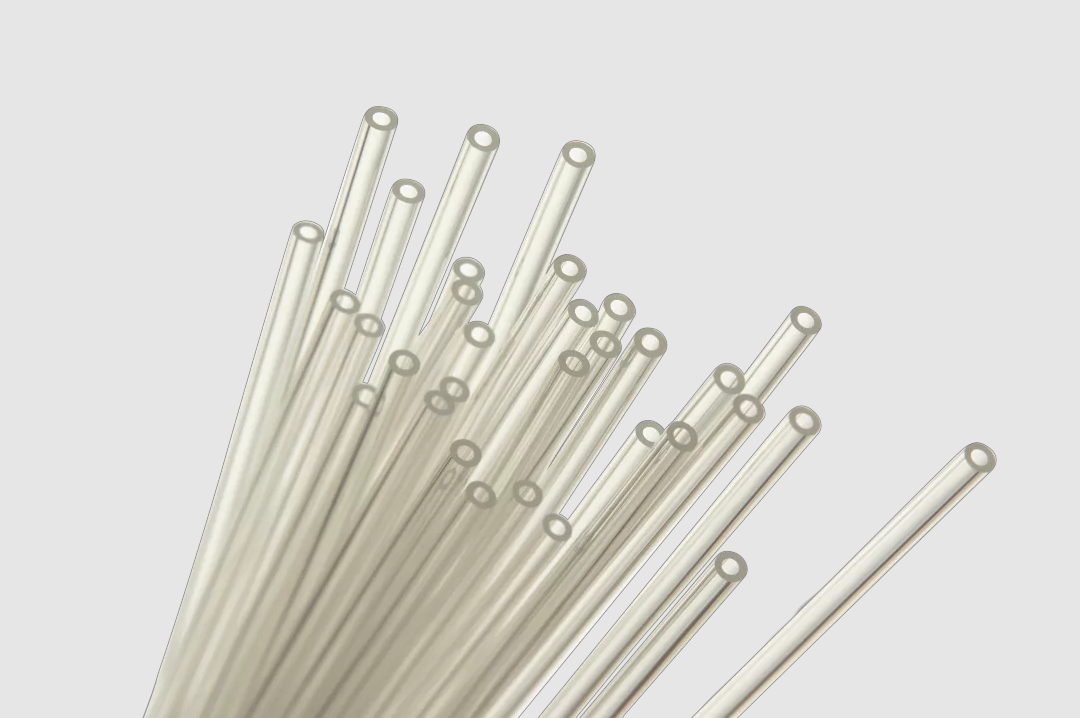Why is the Single Lumen Tube a Vital Tool in Medical Practice?
Picture a bustling hospital environment where a patient’s survival hinges on the meticulous administration of fluids or the precise insertion of medical instruments. In such high-stakes moments, the functionality and dependability of medical devices become critical. It is within these circumstances that the Single Lumen Tube proves indispensable, offering a pivotal solution for a multitude of clinical procedures.

Either to facilitate the accurate introduction of instruments during surgery. Whether they ensure uninterrupted and controlled delivery of fluids during treatment, single-lumen tubing occupies a central place in healthcare applications. Its strong design and wide array of uses make it a key player in hospitals and clinics around the globe. What characteristics set this tube apart, and how does it satisfy the diverse demands of the medical field? A closer look at its applications, unique features, and customized options reveals why this tool is so highly regarded.
Unveiling the Critical Role of Single Lumen Tubes in Healthcare
The Single Lumen Tube, often termed a PA Tube, is a specialized medical apparatus employed in numerous clinical procedures. This device acts as a conduit, enabling either the precise delivery of fluids or the insertion of instruments into the human body. Its well-engineered design ensures that these procedures are carried out with impeccable precision and reliability.
Single-lumen tubing is commonly used in a variety of healthcare settings, from hospitals and emergency rooms to outpatient clinics. Plays an important role in both diagnosis and treatment.Their flexibility in application renders them an irreplaceable resource in modern medical technology.
Addressing Medical Needs in Diverse Scenarios
A primary reason for the widespread reliance on Single Lumen Tubes within medical settings is their adaptability to meet a broad spectrum of medical requirements. Take, for example, angiography—a procedure where a catheter is inserted into blood vessels to visualize the arteries. The Single Lumen Tube provides the exactitude necessary for guiding the catheter to its intended destination, ensuring successful outcomes in such delicate interventions.
In critical care units, where the swift and accurate administration of fluids or medications can mean the difference between life and death, these tubes are instrumental. Their design supports consistent and controlled flow rates, which helps mitigate risks such as dosage errors or blockages.
Additionally, the tube’s biocompatibility ensures it is safe for contact with internal tissues and body fluids. This greatly reduces the possibility of adverse reactions or infection. This characteristic makes single-lumen tubes very effective in sensitive applications. Including the use of guiding catheters or microcatheters during complex surgical procedures.
Key Features of Single Lumen Tubes: Crafted for Accuracy and Endurance
The effectiveness of single-lumen tubes is largely due to their specific design and construction. The design and construction meet the demands of intensive clinical use while ensuring maximum patient safety and comfort.
Robust and Flexible Composition
Materials chosen for manufacturing Single Lumen Tubes prioritize durability and flexibility. Polyamide (PA) is a commonly used material, offering an exceptional balance between strength and malleability. Polyamides are known for their high abrasion and chemical resistance. They are ideal for medical environments where tubing must withstand constant use and contact with body fluids or medications.
This sturdy composition guarantees that the tube can withstand high-pressure conditions without the risk of breaking or leaking. Simultaneously, its flexibility allows healthcare professionals to guide the tube with precision during even the most delicate operations.
Ensuring Patient Safety with Biocompatibility
One of the most vital aspects of Single Lumen Tubes is their biocompatibility. These tubes often come into direct contact with internal body tissues and fluids. Therefore, they must be non-reactive. By using specially designed inert materials, the risk of inflammation, infection or allergic reactions can be minimized. This helps to avoid complications during or after the medical procedure.
This focus on biocompatibility is especially crucial for procedures such as angiography catheter insertion, where the tube must remain inside the body for extended periods. The materials used in the tube reduce the likelihood of complications while maximizing patient safety.
Built for Precision
The technical specifications of Single Lumen Tubes are meticulously calibrated to ensure accurate performance in clinical applications. For instance, the outer diameter typically ranges from 0.5 to 10 millimeters, with a tolerance as fine as ±0.02 mm. Similarly, the wall thickness is engineered to provide a balance between robustness and flexibility. These parameters are vital for ensuring the tube’s reliability in the delivery of fluids or the passage of instruments, without risks of leaks or structural collapse.
Applications of Single Lumen Tubes: Versatility in Medical Procedures
The wide-ranging applications of Single Lumen Tubes make them invaluable across different medical disciplines, from diagnostics to complex surgical interventions. Their adaptability means they can be utilized in varied environments, addressing numerous medical challenges.
PTA Balloon Single Lumen Tubes
A prominent application for Single Lumen Tubes is in PTA (Percutaneous Transluminal Angioplasty) balloon procedures. During this type of surgery, the tube serves as a channel through which a balloon is guided into narrowed or blocked arteries. The precision afforded by the Single Lumen Tube ensures the balloon is delivered to the precise location, preventing further damage to the blood vessel walls.
Angiography Catheter Insertion
Single Lumen Tubes are also integral to angiography procedures, wherein a catheter is inserted to visualize blood vessels. This allows physicians to assess and diagnose cardiovascular conditions effectively. The precise construction of the tube ensures the catheter can be guided smoothly into place, producing accurate imaging without additional complications.
Guide Catheters and Microcatheters
Guide catheters and microcatheters depend on Single Lumen Tubes for their insertion and navigation within the vascular system. These catheters are used in minimally invasive procedures like stent placements and embolizations, where accuracy is critical. Thanks to the tube’s flexibility and biocompatibility, it is possible to maneuver the catheter with care, minimizing trauma to the body’s delicate vascular structures.
Custom Single Lumen Tube Solutions: Tailored for Specialized Medical Requirements
While standard Single Lumen Tubes address the needs of many routine medical procedures, specific situations call for customized designs. Leading manufacturers like Demax offer personalized Single Lumen Tube solutions, catering to specialized clinical demands and providing medical professionals with the exact tools required for their procedures.
Custom Designs for Specialized Procedures
In certain cases, healthcare providers require Single Lumen Tubes with tailored diameters, wall thicknesses, or material properties to suit particular medical tasks. Custom designs allow for the precision necessary to conduct highly specialized interventions. For instance, in PTA procedures where narrower vessels are involved, a tube with a smaller outer diameter might be essential for successful navigation.
Specialized Materials for Enhanced Durability
Alongside custom dimensions, certain medical procedures may demand materials with enhanced resistance to chemicals or pressure. For example, in long-term procedures or those involving harsh environments, fluoropolymers may be employed in place of polyamide to boost the tube’s resistance to corrosion and chemical degradation. Such materials ensure the tube maintains performance even in extreme conditions.
Tailored Biocompatibility for Sensitive Cases
Some procedures involve patients with unique sensitivities or allergies. For these situations, custom single-lumen tubes can be developed with specific coatings or hypoallergenic materials. Minimize the risk of adverse reactions and ensure the highest level of patient care.
Demax: A Trusted Supplier of High-Quality Single Lumen Tubes
For healthcare professionals seeking reliable Single Lumen Tubes, Demax stands out as a leading provider. I is known for its precision engineering, durability, and commitment to patient safety. Demax provides high-performance solutions that meet the diverse needs of the medical industry. Demax offers both standard and custom tubing designs, ensuring healthcare providers have the flexibility to choose the best tool for each procedure. Enabling them to deliver best-in-class care.

Conclusion: The Importance of Single Lumen Tubes in Modern Medicine
The Single Lumen Tube remains an essential element in contemporary medical practice, offering a combination of accuracy, durability, and adaptability. Whether utilized for fluid administration, the insertion of instruments, or specialized surgical interventions, these tubes consistently meet the complex demands of healthcare professionals. Suppliers like Demax provide customized solutions, ensuring that even the most intricate medical requirements are addressed, thus prioritizing both patient safety and procedural success.